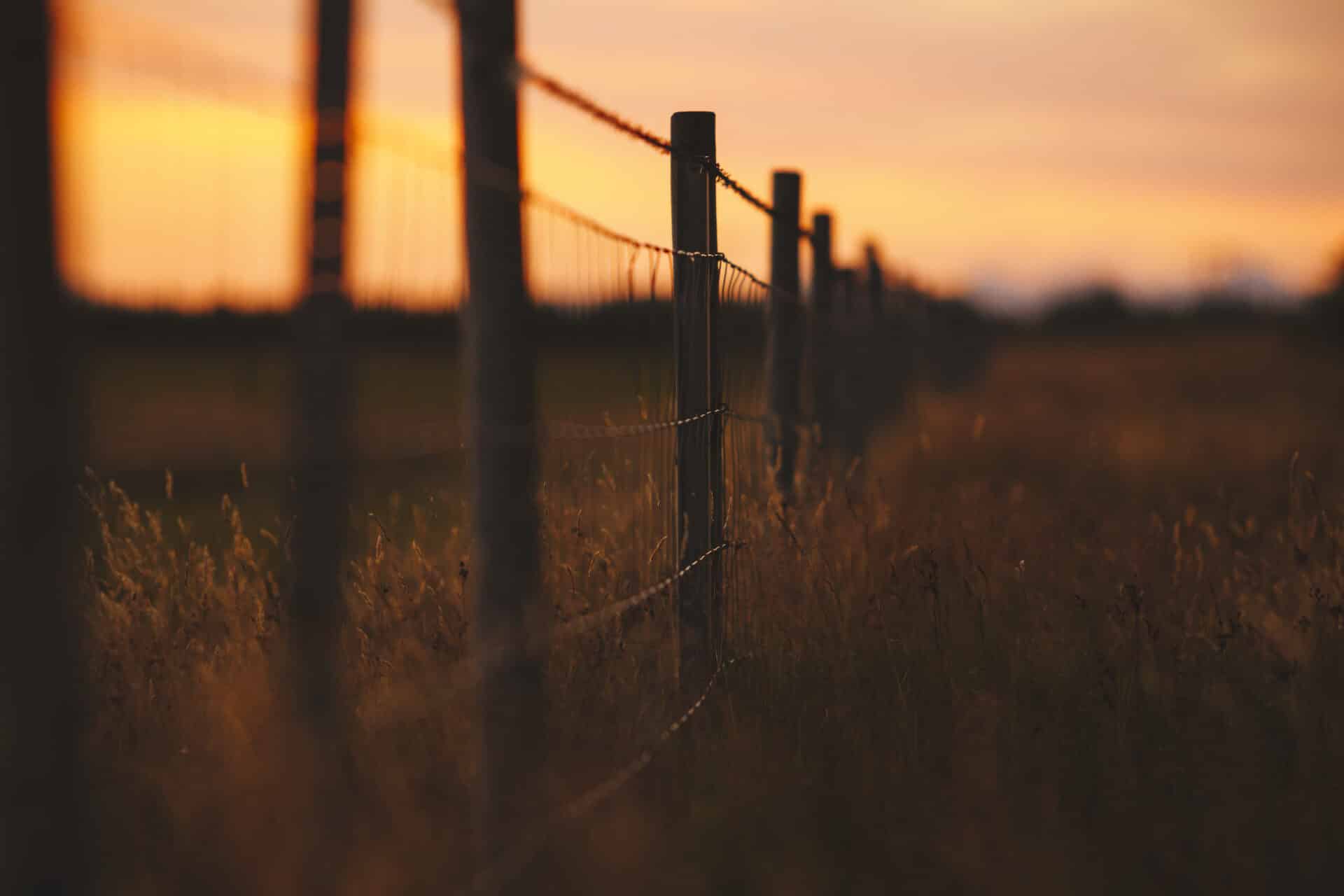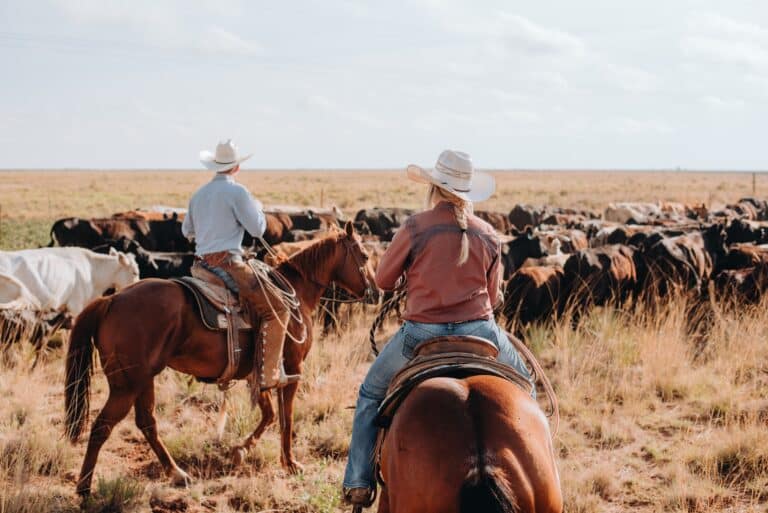When you picture life in the country, where do you see yourself exactly? Are you growing crops on a farm or raising livestock on a ranch? While both evoke images of wide-open spaces, the choice ultimately depends on your goals.
This guide outlines the key differences in land use, property size, investment potential, and lifestyle considerations to help you make an informed decision. Let’s explore what makes these property types unique and how they might align with your aspirations.
Key Differences in Land Use
What’s the difference between a farm and a ranch? The main difference between farms and ranches lies in how the land is used. Farms focus on cultivating crops, while ranches primarily support livestock. These different purposes determine which tools, infrastructure, and daily responsibilities you need for each.
Farms: Where Crops Take Center Stage
Farms are dedicated to growing fruits and/or vegetables, typically at larger scales, like with wheat or corn. Common activities include planting, irrigation, and harvesting. To maximize yields, farm owners rely on strategies like crop rotation and soil management.
Why choose a farm? You can:
- Produce your own organic fruits and vegetables.
- Contribute to the community through local markets.
- Enjoy the reward of watching your land flourish season after season.
Ranches: Raising Livestock
Ranches support the breeding and rearing of animals such as cattle, horses, or sheep. This requires ample grazing space, durable fencing, and water sources. Ranchers focus on animal health and often engage in breeding or selling livestock.
Why choose a ranch? You can:
- Live the classic cowboy dream with horseback rides at sunrise.
- Explore the rewarding business of livestock sales or wool production.
- Experience a lifestyle deeply connected to the rhythms of nature.
Land Requirements and Property Size
Size matters when deciding between farm vs ranch. Because farms and ranches have distinct purposes, they have different needs in terms of their terrain and property scales. Understanding the differences between a farm vs ranch could help you decide which would suit you better.
Farms: Efficiency Over Extent
Farms thrive on arable land—often spread across flat or gently rolling terrain for ease of planting and irrigation. Smaller plots may suit specialized operations like orchards or vineyards, but large-scale crop production typically requires expansive acreage.
What to consider when exploring farm land for sale:
- Accessibility to water sources for irrigation
- Fertile, well-drained soil for optimal crop growth
- Compact equipment for smaller-scale farming
Ranches: Space for Grazing
While you can still farm on smaller plots, ranches require much larger tracts to allow grazing for livestock. The terrain, which can vary from lush meadows to rugged hills, must accommodate herds while providing opportunities for water access and shelter.
What to consider when exploring ranch land for sale:
- Ample water access for livestock hydration
- Reliable fencing to ensure animal safety
- Terrain that supports year-round grazing
Investment Potential
Rural properties aren’t just about lifestyle; they’re also an opportunity to create wealth. Whether you want to sell produce, livestock, or experiences, understanding these prospects can clarify your investment decision.
Farms: Cultivating Profits
Farms generate income by selling crops, producing value-added goods, leasing land for seasonal farming, or providing agrotourism activities. Crop insurance and government subsidies can also enhance profitability.
Revenue streams for farms include:
- Growing high-demand crops like soybeans or wheat.
- Selling fresh produce at farmers’ markets.
- Creating niche products like organic produce or handmade goods from your harvest.
- Offering agritourism experiences, such as farm stays.
- Hosting seasonal events like corn mazes or flower festivals.
Ranches: Livestock Sales and Beyond
Ranches often profit through livestock sales, meat processing, or wool production. Some also double as recreational destinations, offering horseback riding tours or dude ranch experiences.
Revenue streams for ranches include:
- Selling animals for meat or breeding.
- Selling cattle, sheep, or horse breeding services.
- Producing and marketing wool or leather.
- Opening the property for agritourism or hunting.
- Hosting agritourism events, such as cattle drives.
- Leasing land for events or filming locations.
Lifestyle and Maintenance Considerations
Owning rural land isn’t just a financial commitment—it’s a lifestyle choice. Considering the time, effort, and skill required to manage each type of property ensures you’re prepared for the commitment.
Life on a Farm
Farming follows the rhythm of planting and harvesting seasons. Tasks like soil preparation, irrigation, and pest control require a systematic approach. This routine appeals to those who enjoy structure and working directly with the land. Smaller farms may be manageable for families, while larger operations demand significant resources.
Daily farm life might include:
- Early mornings tending to crops.
- Managing soil health with fertilizers or compost.
- Regular maintenance of equipment and irrigation systems.
- Seasonal cycles of planting and harvesting.
Life on a Ranch
Ranching offers a more dynamic lifestyle, with every day bringing a new challenge. Herding, feeding, and caring for animals dominate the agenda, and flexibility is key when weather or livestock require attention. Tasks include feeding, herding, and maintaining grazing areas.
Daily ranch life might include:
- Rounding up cattle on horseback.
- Monitoring livestock for signs of illness.
- Managing grazing patterns to preserve pastures.
- Providing supplemental feed during dry seasons.
- Repairing fences and managing pasture rotations.
- Addressing unexpected challenges like storms or strays.
Made Your Decision? Let Land.com Take You There
Now that you understand what is the difference between ranch and farm, you should feel more confident about choosing between them. The ranch vs farm question ultimately depends on your goals, resources, and lifestyle preferences.
Whether you’re drawn to the earthy satisfaction of farming or the rough adventure of ranching, owning rural land offers unparalleled rewards. Reflect on your goals, and visualize the lifestyle you want to pursue.
Ready for rugged ranch life? Check our ranches for sale. If farms are more your fancy, check our farms for sale. Either way, you can depend on Land.com to find your perfect property.
Sources:
SARE. Farming Practices that Support Soil Health. https://www.sare.org/publications/farming-with-soil-life/farming-practices-that-support-soil-health/
National Geographic. Ranching. https://education.nationalgeographic.org/resource/ranching/
Elmens. Ranch Vs Farm: Which One Is A Suitable Investment For You? https://www.elmens.com/business/finance/ranch-vs-farm-which-one-is-a-suitable-investment-for-you/
Texas Real Food. Animal Husbandry for Homesteaders. https://discover.texasrealfood.com/homesteading/animal-husbandry-for-homesteaders/


